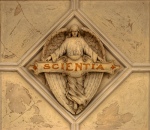![]() Celebrities commonly change their names on the path to stardom. Elton John began life as Reginald Kenneth Dwight, John Denver as Henry Deutschendorf, Jr, and Bela Lugosi as Be’la Ferenc Dezso Blasko. A name change can make someone more marketable in the fickle entertainment industry. However, once someone makes it big, their name usually stays the same (excepting P-Diddy and Prince, whose constant name changes became marketing strategies in themselves). A celebrity’s name becomes the branding that represents and sells their fame.
Celebrities commonly change their names on the path to stardom. Elton John began life as Reginald Kenneth Dwight, John Denver as Henry Deutschendorf, Jr, and Bela Lugosi as Be’la Ferenc Dezso Blasko. A name change can make someone more marketable in the fickle entertainment industry. However, once someone makes it big, their name usually stays the same (excepting P-Diddy and Prince, whose constant name changes became marketing strategies in themselves). A celebrity’s name becomes the branding that represents and sells their fame.
What about name changes for scientific celebrities? I’m not talking about people, but rather the components of nature that we observe around ourselves and adorn with nomenclature. There was (unnecessary) public uproar when Pluto was re-designated as a Kuiper Belt planetoid. Neil deGrasse Tyson even got hate mail from children when the American Museum of Natural History updated its displays accordingly. The change was the result of a non-unanimous scientific consensus attempting to better define the bodies of the solar system, but many people had become attached to the idea of PLANET Pluto and reacted negatively to the news.
Now a new conundrum is brewing within scientific circles as biologists try to decide what to do when the nomenclature describing a celebrity organism no longer jives with scientific observation. Nature News asks, ‘What’s in a name?’. Well, when the name is Drosophila melanogaster, there’s 100 years of glorious scientific discoveries in a name.

Photo by mr.checker
However, there is one slight problem; Drosophila melanogaster is probably not Drosophila melanogaster.
The issue here is the status of the genus, Drosophila. This genus, as it is currently recognized, contains 1,450 species of fruit flies. A genus, or any level of taxonomic organization, is supposed to be monophyletic, that is; composed only of species that are evolutionarily closer to one another than they are to the members of any other genus. However, with Drosophila, this has been shown through extensive molecular and morphological analysis not to be the case.
Look at the phylogenetic tree to the left (for an overview of phylogenetics, read this post). Each node on the tree represents a group of species of the same genus. Notice, however, that the 1,450 species of the Drosophila genus are split up into six different clades, interspersed with other genera. This is called paraphyly, and it points out an error in the taxonomic nomenclature. All the species of a given genus should be grouped together, in a monophyletic relationship. Ultimately, this means that there is going to have to be some reorganization of the genus. Some members of Drosophila are going to be ousted and given new names.The obvious solution to preserve the celebrated D. melanogaster species name would seem to be leaving its clade (marked with a red arrow) as genus Drosophila and renaming the others. However, there are two problems with this. First of all, restructuring the genus in the manner would push out, and require the renaming, of 1,100 species of fruit flies. Furthermore, the type species Drosophila funebris (marked with an orange arrow), the animal from which the Drosophila genus was originally described in 1787, lies in a different clade than D. melanogaster. A recent petition to re-designate the genus type species as D. melanogaster was voted down by the International Commission on Zoological Nomenclature.
As it looks at the moment, D. melanogaster is probably on its way to becoming Sophophora melanogaster. This has generated shock and disbelief from biologists; citing possible research impediments should the name change go through. In addition, they surely have a sentimental attachment to the name of their favorite laboratory arthropod. When biologists say ‘Drosophila‘, they mean Drosophila melanogaster. This celebrated animal has a strong claim to being the most important and powerful research tool biologists have in their arsenal. However, even D. melanogaster, like Pluto, may need to bend in name to the powers of parsimonious taxonomic nomenclature.
_____________________________________________________________________
Read more about the Drosophila name fight here and here at Nature News, or here at Catalogue of Organisms
Check out some of my other posts about phylogenetics:
References:
Kim Van der Linde, & David Houle (2008). A supertree analysis and literature review of the genus Drosophila and closely related genera (Diptera, Drosophilidae)Insect Syst. Evol., 39, 241-267



















